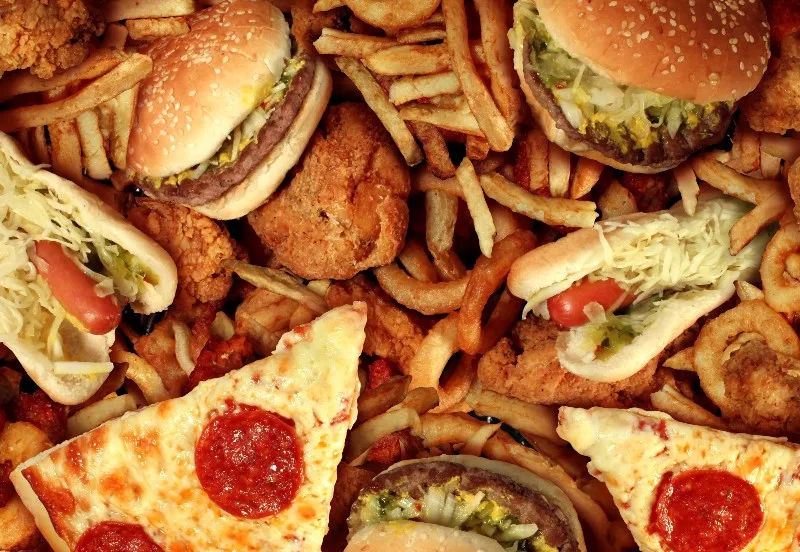Remember the days when we shopped in taste unlimited markets no bigger than a convenience store? They were full of locally grown fresh fruits and vegetables, meat, nuts, beans, and grains. Markets back then had only a couple shelves that were stocked with non-perishable foods.
Today, it’s the opposite. We now have supermarkets that are predominantly stocked with non-perishable food items that can sit on a shelf for years. They are called “processed foods.” There are many reasons why this shift has taken place, but the real concern is, how do we now maneuver through a world full of artificial food? That’s a valid concern, so hopefully the following information will help you sift through this confusing world of food sources
Processed Food
Most processed foods are actually not real food at all. Real food is alive, and will spoil. Processed foods may include a few “real food” ingredients; however those items have been processed in order to give it a profitable shelf life – which ultimately reduces it from a living food, to a dead food. Dead food can sit on a shelf for a long time.
Addictive Food
Many manufacturers add addictive chemicals to their processed foods in order to cause cravings and hook us into consuming their product more frequently; therefore driving up their profits. I read years ago about MSG’s hallucinogenic effects that cause us to crave the food that is laced with MSG. These chemicals get lost in the huge list of ingredients. Many times people will eat the food and ignore the dangers. Usually they just don’t want to, or don’t have the time to investigate every ingredient. They are driven by their appetite and cravings because the last time they ate the food it gave them great enjoyment. But as we know, just because something was enjoyable, does not mean that it was safe.
Fortified and Enriched Food
Fortified and enriched foods typically originate as real food, however with the healthiest part removed; either purposely removed, or destroyed during the processing stage. This is done to give the product a long and profitable shelf-life. Unfortunately, the part that spoils is the part that contains the greatest health benefits. Adding synthetic vitamins, minerals, and fiber back into the product does not make up for the lost natural nutrition. It simply makes the product look better. Again, this reduces the real food to artificial food – dead food.
Here’s an interesting fact about fortified foods. If the manufacturer does not complete step 2, by injecting artificial nutrition back into the item, then it cannot be sold in a grocery store. A pharmacist told me years ago that it’s illegal to sell this kind of product in a grocery store because it’s not really food! Without being “fortified” with artificial nutrients it could only be sold in a drug store. Remember, our bodies are alive, and they require food that’s alive – in order to remain alive!
Real Food
Real food is grown from the earth. Fruits, vegetables, grains, lentils, seeds, and nuts are loaded with vitamins and minerals, natural medicine (phytochemicals), and energy; and are alive and full of remarkable components that keep us alive and healthy. You can never go wrong with living food choices. Living food has the right amount of fiber, as well as vitamins and minerals perfectly combined to work synergistically together. Living food has protein, carbohydrates, and fats balanced to compliment your body’s needs, and phytochemical medicines that fight the daily bugs and chemicals of life. With living food, there is no need to count carbs, omit fats, or double up on protein. The work has already been done for us. It’s been created to perfectly match our body’s needs. Eating real food is like inserting a square peg, into a square hole. It fits.
Furthermore, living food tastes great! If you remove artificial food sources from your diet, your taste buds will begin to detox and return to normal sensitivity. When that happens, you will find that artificial food tastes artificial and real food tastes marvelous!
What about animal protein? Animal protein is considered real food, but not living food. The purpose of animal protein is for our protein needs. Animal protein does not supply us with vitamins, minerals, or natural medicine. However, lean animal proteins can be very helpful for those who require more protein. Be aware though that animal fat and any chemicals or hormones that the animal is fed can be harmful to you. Choose animal proteins carefully and limit your intake.
So how do we maneuver in this world of artificial food? We’ve been conditioned to believe that we can solve this problem by simply reading the ingredient list and being aware of what we are eating. I don’t agree with this method. We can spend countless hours in our life reading words we don’t know, then Googling them to decide whether they are good or bad. Even then, we cannot be sure that what we are reading on the internet is true. The internet is full of opinions, sales pitches, and tainted studies. A person can go mad trying to follow all the internet health rules!


